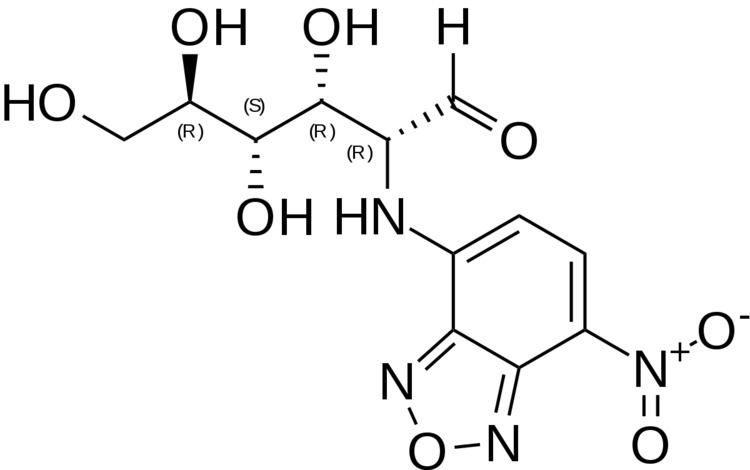 | ||
2-NBDG is a fluorescent tracer used for monitoring glucose uptake into living cells; it consists of a glucosamine molecule substituted with a 7-nitrobenzofurazan fluorophore at its amine group. It is widely referred to a fluorescent derivative of glucose, and it is used in cell biology to visualize uptake of glucose by cells. Cells that have taken up the compound fluoresce green.
2-NBDG is similar to radiolabeled glucose in that both can be used to detect glucose transport. Unlike radiolabeled glucose, 2-NBDG is compatible with fluorescence techniques such as a fluorescent microscopy, flow cytometry, and fluorimetry
The compound is taken up by a variety of mammalian, plant, and microbial cells In mammalian cells, one transporter for 2-NBDG is GLUT2. In bacterial cells, the predominant transporter is the mannose phosphotransferase system. Cells that lack these or other compatible transporters do not take up 2-NBDG.
Similar to glucose, 2-NBDG is transported according to Michaelis-Menten kinetics. However, transport of 2-NBDG has a lower
Once taken up, the compound is metabolized to a non-fluorescent derivative, as shown in Escherichia coli. The identity and further metabolism of this non-fluorescent derivative has not been established.
